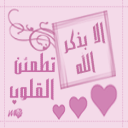الجوهرة المصونة
*****




المشاركات : 17164
العمـر : 36
تعاليق : مشرفة الطب والصحة
المزاج : 
الدولة : 
المهنة : 
الهواية : 
التسجيل : 10/10/2008
النقاط : 18248
التقييم : 501

 
توفيقك يارب

 |  موضوع: Respiratory examinationفحص الجهاز التنفسي موضوع: Respiratory examinationفحص الجهاز التنفسي  السبت ديسمبر 03, 2011 2:21 pm السبت ديسمبر 03, 2011 2:21 pm | |
| In medicine, the respiratory examination is performed as part of a physical examination,[1] or when a patient presents with a respiratory problem (dyspnea (shortness of breath), cough, chest pain) or a history that suggests a pathology of the lungs. It is very rarely performed in its entirety or in isolation, most commonly it's merged with the cardiac examination.
Position/Lighting/Draping
Position - patient should sit upright on the examination table. The patient's hands should remain at their sides. When the back is examined the patient is usually asked to move their arms forward (hug themself position) so that the scapulae are not in the way of examining the upper lung fields. as many physicians around world request
Lighting - adjusted so that it is ideal. Draping - the chest should be fully exposed. Exposure time should be minimized.
The basic steps of the examination can be remembered with the mnemonic PIPPA:
Position
Inspection (for example, "normal effort")
Palpation (for example, "no tenderness to palpation", "fremitus WNL")
Percussion (for example, "clear to percussion bilaterally" or "CTP B")
Auscultation (for example, "clear to auscultation bilaterally" or "CTA B"; "no R/R/W" or "no rhonchi, rales or wheezes")
Inspection of the fingers for cyanosis or clubbing is sometimes included in the respiratory examination.
Inspection
Inspection or observation involves observing the respiratory rate which should be in a ratio of 1:2 inspiration:expiration. It is best to count the respiratory rate under pretext of some other exam, so that patient does not sub consciously increase his baseline respiratory rate. An acidotic patient will have more rapid breathing to compensate known as Kussmaul breathing. Another type of breathing is Cheyne-Stokes respiration, which is alternating breathing in high frequency and low frequency from brain stem injury. It can be seen in newborn babies which is sometimes physiological (normal). Also observe for retractions seen in asthmatics. Retractions can be supra-sternal, where the accessory muscles of respirations of the neck are contracting to aid inspiration. Retractions can also be intercostal, there is visible contraction of the inter costal muscles(between the ribs) to aid in respiration. This is a sign of repiratory distress. Observe for barrel-chest (increased AP diameter) seen in COPD. Observe for shifted trachea or one sided chest expansion, which can hint pneumothorax.
Tracheal deviation (can suggest of tension pneumothorax)
Chest wall deformities
Kyphosis - curvature of the spine - anterior-posterior
Scoliosis - curvature of the spine - lateral
Barrel chest - chest wall increased anterior-posterior; normal in children; typical of hyperinflation seen in COPD
Pectus excavatum - sternum sunken into the chest
Pectus carinatum - sternum protruding from the chest
Signs of respiratory distress
Cyanosis - person turns blue
Pursed-lip breathing - seen in COPD (used to increase end expiratory pressure)
Accessory muscle use (scalene muscles)
Diaphragmatic paradox - the diaphragm moves opposite of the normal direction on inspiration; suspect flail segment in trauma
Intercostal indrawing
movement of chest-chest movement decreases on the affected side
jugular venous pulse-indicates right heart failure
Palpation
For palpation, place both palms or medial aspects of hands on the posterior lung field. Ask the patient to count 1-10. The point of this part is to feel for vibrations and compare between the right/left lung field. If the pt has a consolidation (maybe caused by pneumonia), the vibration will be louder at that part of the lung. This is because sound travels faster through denser material than air.
If there is pneumonia, palpation may reveal increased vibration and dullness on percussion. If there is pleural effusion, palpation should reveal decreased vibration and there will be 'stony dullness' on percussion.
Tracheal deviation - check whether trachea is in centre line.
Tactile fremitus - the patient says boy-O-boy or ninety-nine, whilst physician sense with ulnar aspect of hand for changes in sound conduction.
Respiratory expansion - check whether expansion is equal
Location of apex beat - check if there has been deviation of heart
Percussion
On percussion, you are testing mainly for pleural effusion or pneumothorax. The sound will be more tympanic if there is a pneumothorax because air will stretch the pleural membranes like a drum. If there is fluid between the pleural membranes, the percussion will be dampened and sound muffled.
Middle finger strikes the middle phalanx of the other middle finger. The sides of the chest are compared.
dullness indicates consolidation
hyper-resonance (as can be simulated by percussing the inflated cheek) suggests a pneumothorax (can be related to COPD or a pleural effusion)
diaphragmatic excursion - normal is 3 to 6 cm.
Auscultation
Lung auscultation is listening to the lungs bilaterally at the anterior chest and posterior chest. Wheezing is described as a musical sound on expiration or inspiration. It is the result of narrowed airways. Rhonchi are bubbly sounds similar to blowing bubbles through a straw into a sundae. They are heard on expiration and inspiration. It is the result of viscous fluid in the airways. Crackles or rales are similar to rhonchi except they are only heard during inspiration. It is the result of alveoli popping open from increased air pressure.
Inspiratory crackles (decompensated congestive heart failure)
Expiratory wheezes (asthma, emphysema)
Stridor and other upper airway sounds
Bronchial vs. vesicular breath sounds
Appropriate ratio of inspiration to expiration time (expiration time increased in COPD) | |
|
نورس
*********




المشاركات : 30951
العمـر : 94
تعاليق : مؤسس منتدى النورس
المزاج : 
الدولة : 
المهنة : 
الهواية : 
التسجيل : 09/10/2008
النقاط : 39243
التقييم : 1559

 
 |  موضوع: رد: Respiratory examinationفحص الجهاز التنفسي موضوع: رد: Respiratory examinationفحص الجهاز التنفسي  الأحد ديسمبر 04, 2011 3:04 am الأحد ديسمبر 04, 2011 3:04 am | |
| يعطيكِ العافية جوهرة الأمل
ودمتِ بحفظ الرحمن | |
|
محمد عاكف على
*




المشاركات : 3
العمـر : 44
الدولة : 
التسجيل : 14/12/2011
النقاط : 3
التقييم : 0

 |  موضوع: رد: Respiratory examinationفحص الجهاز التنفسي موضوع: رد: Respiratory examinationفحص الجهاز التنفسي  الخميس ديسمبر 15, 2011 12:21 am الخميس ديسمبر 15, 2011 12:21 am | |
| بارك الله فيكم ودمتم على الدرب | |
|
نبراس غزة
*********




المشاركات : 8568
العمـر : 39
تعاليق : مساعد إداري
المزاج : 
الدولة : 
المهنة : 
الهواية : 
التسجيل : 27/03/2009
النقاط : 12658
التقييم : 546



 |  موضوع: رد: Respiratory examinationفحص الجهاز التنفسي موضوع: رد: Respiratory examinationفحص الجهاز التنفسي  الأربعاء أغسطس 29, 2012 8:31 am الأربعاء أغسطس 29, 2012 8:31 am | |
|
موضوع رآئعع|ِ|
مشكورهه~ِ|
يعطيكك العافيهه~|
| |
|





